Depending on your network needs, a point-to-point Layer 2 (L2) connection or a Layer 3 (L3VPN) ‘mesh’ could be more appropriate.
But how do you know which approach is right for you? I want to take you through some different scenarios to help illustrate each approach’s strengths and help you make a decision.
We’re often asked about the practical differences in using an L3VPN such as CloudRouter, and so I wanted to illustrate the benefits with a practical example. Let’s take a look at a use case of a customer with four global locations (Dallas, New York, Frankfurt and Sydney):
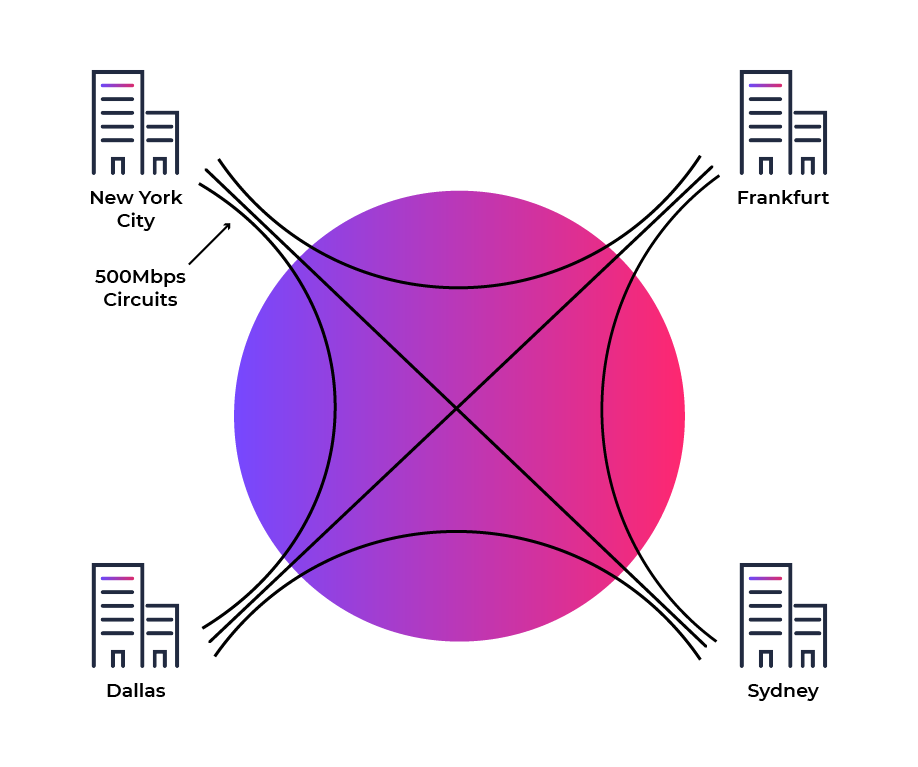
Each of the depicted circuits is 500Mbps, therefore NYC has the ability to send 1.5Gbps (3 x 500Mbps) of traffic.
However, only 500Mbps can be sent to each destination. In addition, because there are 1.5Gbps of circuits terminating at each site, the customer would need a 10GE port as opposed to 1GE port.
Here’s how the costs break down monthly for this example:
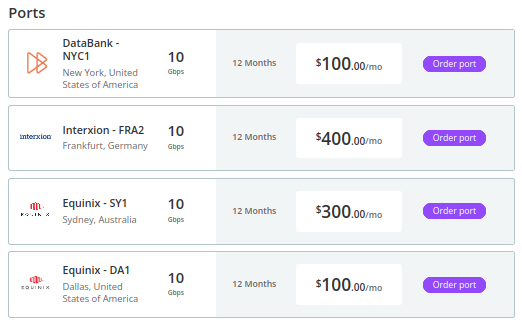
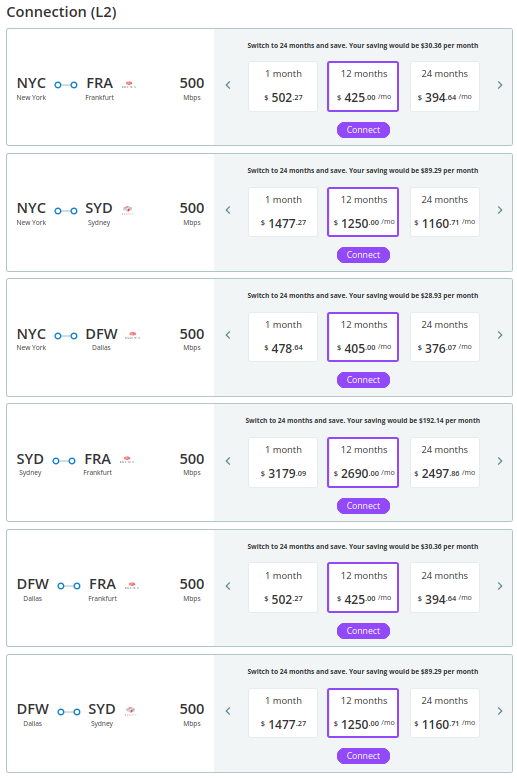
Grand total: $7345/mo
Note: Pricing accurate for this scenario as of 08 Dec 2022 with 12-month commitment. Please refer to the Console Connect app for the most up to date information.
Now, let’s look at how that same customer might transfer the same data if they were using CloudRouter, our L3VPN solution:
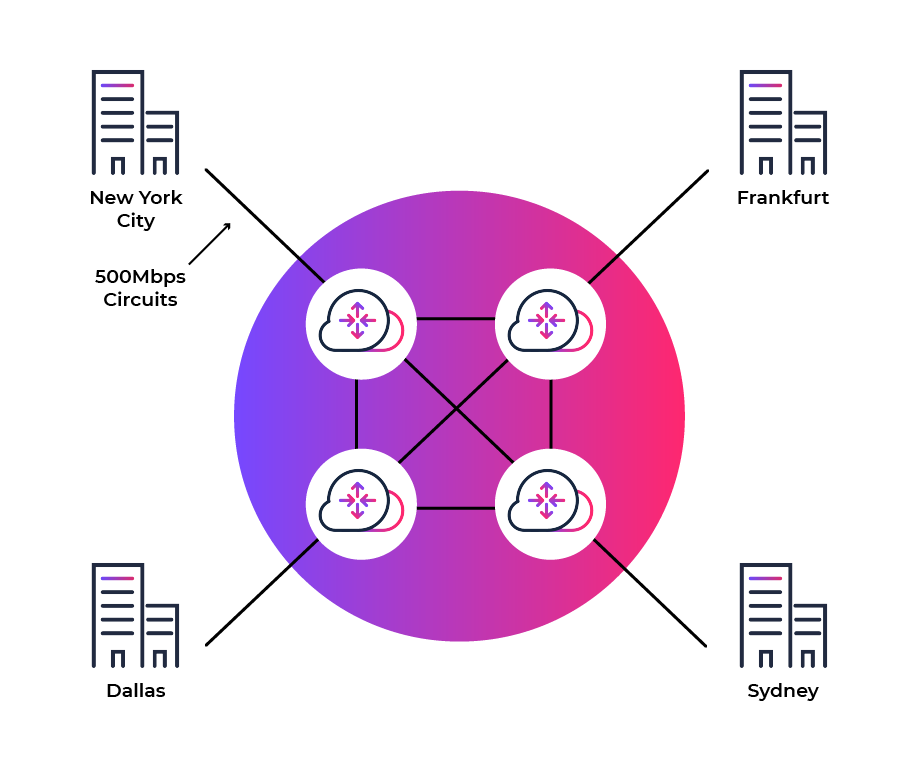
In this L3VPN scenario, each customer site has a 500Mbps circuit into the Console Connect edge. This allows each site to transmit and receive 500Mbps from the network, and due to the full-meshed topology of the L3VPN, each site can send 500Mbps to any other site in the mesh (just as above in the L2 case).
One slight difference is that in the L2 case, each site could technically transport 500Mbps to three other sites simultaneously, where in the L3VPN case, that is not possible.
However, the upside to the L3VPN is that each site only needs to be a 1GE port, and the customer could increase the bandwidth of each site to 1Gbps without needing to change the access port.
Pricing this scenario is a bit different, but works out like this:
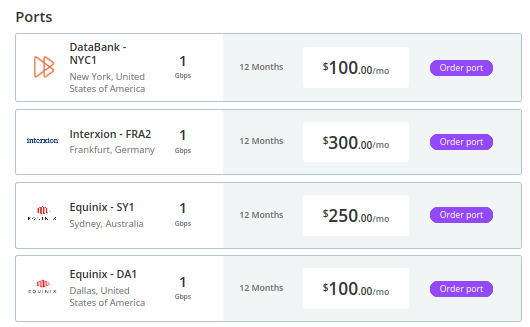
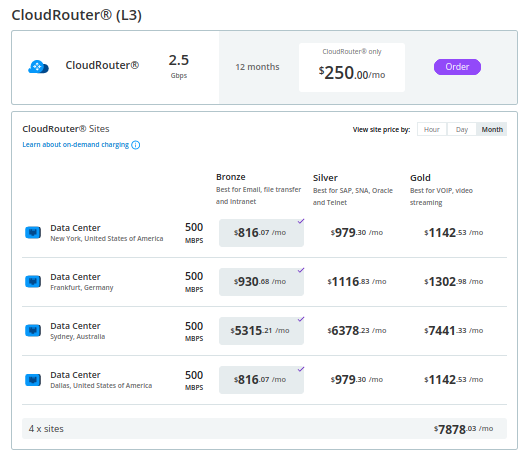
Grand Total: $8878.03/mo
Note: Pricing accurate for this scenario as of 08 Dec 2022 with 12-month commitment. Please refer to the Console Connect app for the most up to date information.
As an example to compare the two, imagine a packet being sent from New York to Sydney.
In the L2 scenario, all four of the sites would have three different peerings each (one to each of the remote sites).
The customer’s router in NYC would first need to look-up the destination IP address in the router’s local table, which would return that the packet needs to be sent out the point-to-point circuit from NYC -> SYD.
The router would then egress that packet towards the NYC Console Connect edge using the appropriate VLAN to signal to Console Connect the traffic would be routed via that point-to-point circuit.
Contrast that to the L3VPN case, where the customer would simply send the traffic towards the NYC Console Connect edge, and upon arrival, the Console Connect routers where the customer’s CloudRouter sites were hosted, would interrogate the packet in order to understand the final destination.
The MPLS network which makes up the core of Console Connect’s network would then find the shortest available path to Sydney, and send the packet towards the next hop in that path.
In this example, the CloudRouter solution is $1533.03 (17.27%) more each month for the convenience of having Console Connect handle the routing.
The “fire and forget” nature of L3VPN makes it a very attractive solution for many enterprises.
Think of it like the postal service where one simply writes the destination on a parcel then drops it at the local post. From that point it is the responsibility of the post to determine the fastest path for package delivery, and to properly route the parcel along towards the destination.
The L2 scenario would require the customer to specify the various means of conveyance to be used at every step of the journey (e.g. trunk from NYC to the regional airport, specific flight from NYC -> SYD, then another truck to the stated metro in Sydney, and finally a courier for final delivery.
This is just one scenario, of course - there are plenty of other situations where a L3VPN solution can be of benefit. If there are other scenarios you’d like me to take a look at, just ask - and if you’re ready for us to act as your postal service, just let us know.
